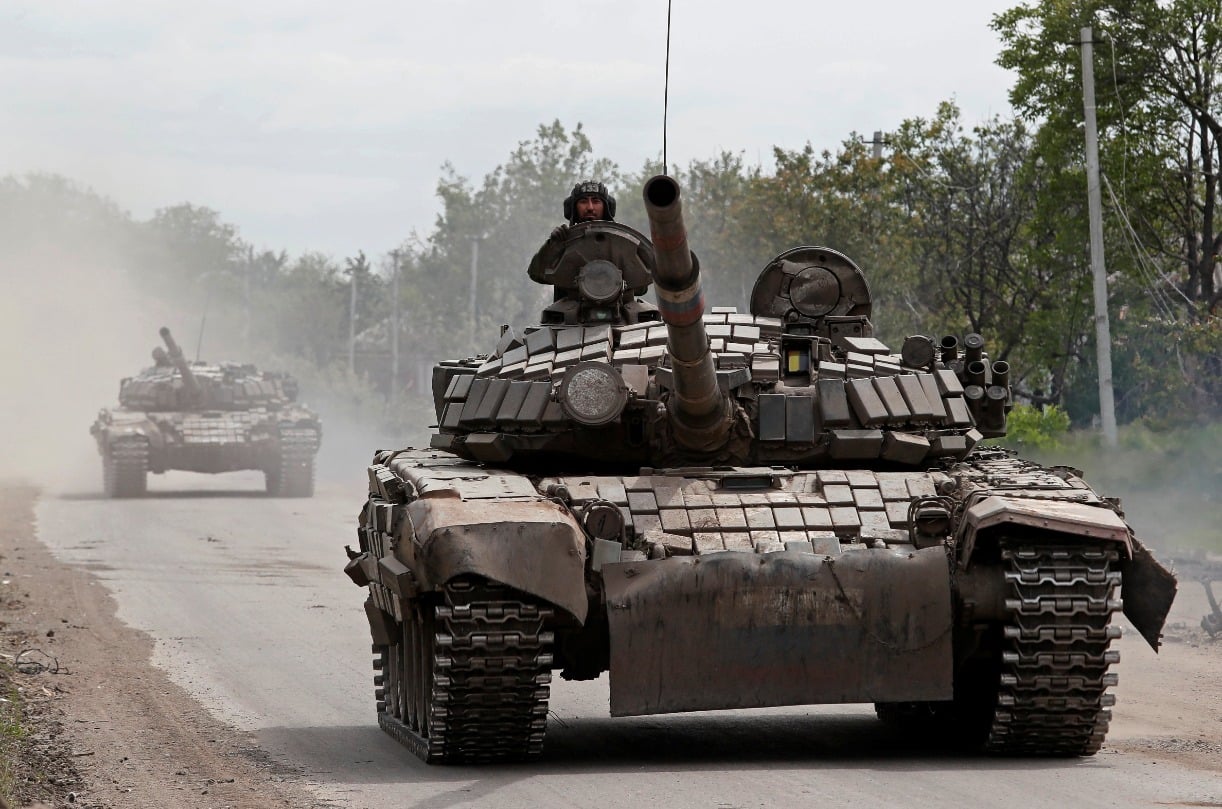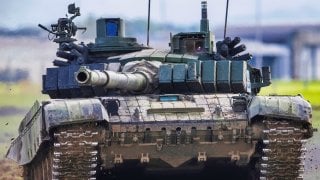T-72: The Old Tank That Saved Russia in the Ukraine War
After suffering heavy losses of their armor on the battlefield in Ukraine, Russian forces have switched over to their old T-72 Main Battle Tank (MBT).
The T-72 Tank Won't Go Away: The Ukraine War has entered its third, hellish year. Both sides have sides suffered horrible losses. The frontlines have remained mostly static (with the Russians continuing to hold most of the territory that they had at the start of their illegal war in 2022).
The Ukraine War, however, is a snapshot of our future.
And it is more like a blast from the past. This war has all the worst aspects of the twentieth century’s wars. The Ukraine War has a brutal frontline defined by trench warfare, just like the First World War. From there, this frightful mix tape of twentieth-century warfare includes a constant cavalcade of 1970s-era weapons systems dominating the battlespace.
Throw in some nuclear threats from Moscow for good measure, too.
Oh, and as a bonus track, you’ve seen the way that drones—the most iconic weapons system of the Global War on Terror—have defined the Ukraine War as well.
At no point, however, has the magnificent, next-generation technologies that all great powers have been developing be used in the ways that their designers had intended. In fact, most of the sophisticated, newer systems that either Russia or the West has designed over the last 30 years are not really being fielded (there are some systems, but not many).
The Ukraine War is a Modern War Stuck in the Past
When Vladimir Putin cooked up his invasion of Ukraine, he envisioned a short, sharp, brutal war of technologized speed and maneuver. In Putin’s formulation, Russia’s invasion would go quite like US President George W. Bush’s ill-fated flight of fancy into Iraq in 2003. Just as Bush thought his war in Iraq would go, once the Russian forces arrived, the country’s government would collapse, and he’d control the country.
Of course, that was not to be.
Much like the Iraq War for the Americans, though, the Ukraine War would transmogrify quickly from the easy, speedy assault by a larger power (Russia) against a smaller power (Ukraine) into a brutal, grinding, war of inches. The most iconic weapons of the Ukraine War were not the T-14 Armata tanks and Su-57 fifth-generation warplanes.
Instead, the definitive Russian weapons systems of the Ukraine War are the old Soviet-era Su-27 warplane and the T-72 tank. The Russians have lost a staggering number of systems. Beyond that, a host of other platforms that Moscow thought would work as advertised, have not worked. After suffering heavy losses of their armor on the battlefield, Russian forces have switched over to their aforementioned old T-72 Main Battle Tank (MBT).
And, while Ukraine’s ridiculous X, formerly Twitter, “NAFO” bot army has celebrated this turn, what they fail to realize is that the Ukrainians have suffered staggering losses at the hands of the Russians—and unlike the Russians, Ukraine’s forces have been degraded whereas the Russian forces have continued marching on.
Ukraine’s military, too, is forced to rely upon mostly antique systems handed to them by NATO as well as systems leftover from the old Soviet days.
Don’t Knock the T-72
As Forbes reported in November of last year after more Russian units were being reequipped with the old Soviet T-72 MBT following heavy losses of their newer systems in the Ukrainian meatgrinder, “It’s further evidence that, despite a heroic effort on the part of Kremlin planners to expand production of more modern tank models, steep losses in Ukraine continue to drag the Russians into the past.”
Maybe it’s a good thing.
After all, the Ukraine War is a war of numbers and time. Russia has both in its corner. And the older Russian systems seem to be doing well for the Russians. Because the Russians are beating Ukraine, despite generous Western aid and support.
The Russians, like the Americans, did not have a sufficient number of advanced systems in reserve. So, when their more complex—and expensive—platforms were lost or damaged in combat, grave strategic gaps in their capabilities were formed. To plug these gaps and proven the Ukrainians from exploiting these weaknesses, Russia turned to their older, in fact, more reliable platforms to get them through this crucible.
With their superior defense industrial base, Russia has been churning out these old Soviet systems like sausages.
There’s no other way to say it, though. Russia, like all major powers, is at a point when its most sophisticated platforms are simply too expensive to mass produce and deploy in such a way that losing these units in combat would not be onerous for their overall force posture. Moscow can count its lucky red star that it has massive numbers of these older systems in reserve.
Neither NATO nor the United States, however, have such luck.
The West is Unprepared for WWIII
If a great power war were to erupt, multiple platforms would be deployed—and likely lost in the conflict—and there’d be little chance of having any replacements on hand for these systems.
That alone could mean that the United States loses the next great power war. The next great power war will likely see the negation of the whizbang, next-generation technologies early in the fight. This would force the combatants to rely on older systems.

And these systems would have to be in abundance and have a large enough industrial base to mass produce them in reliable timeframes.
Russia, China, and their autocratic allies have this right now. The West lacks this. You can see that on display in Ukraine.
About the Author
Brandon J. Weichert, a National Interest national security analyst, is a former Congressional staffer and geopolitical analyst who is a contributor at The Washington Times, the Asia Times, and The-Pipeline. He is the author of Winning Space: How America Remains a Superpower, Biohacked: China’s Race to Control Life, and The Shadow War: Iran’s Quest for Supremacy. His next book, A Disaster of Our Own Making: How the West Lost Ukraine, is due October 22 from Encounter Books. Weichert can be followed via Twitter @WeTheBrandon.
All images are from Shutterstock.


